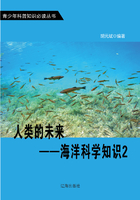(Monarda fisiulosa) Mint family Flowers - Extremely variable, purplish, lavender, magenta, rose, pink, yellowish pink, or whitish, dotted; clustered in a solitary, nearly flat terminal head.Calyx tubular, narrow, 5-toothed, very hairy within.Corolla 1 to 1 1/2 in.long, tubular, 2-lipped, upper lip erect, toothed; lower lip spreading, 3-lobed, middle lobe longest; 2 anther-bearing stamens protruding; 1 pistil; the style 2-lobed.Stem: 2 to 3 ft.high, rough, branched.Leaves: Opposite, lance-shaped, saw-edged, on slender petioles, aromatic, bracts and upper leaves whitish or the color of flower.
Preferred Habitat - Open woods, thickets, dry rocky hills.
Flowering Season - June-September.
Distribution - Eastern Canada and Maine, westward to Minnesota, south to Gulf of Mexico.
Half a dozen different shades of bloom worn by this handsome, robust perennial afford an excellent illustration of the trials that beset one who would arbitrarily group flowers according to color.If the capricious blossom shows a decided preference for any shade, it is for magenta, the royal purple of the ancients, scarcely tolerated now except by Hoboken Dutch and the belles of the kitchen, whose Sunday hats are resplendent with intense effects.
Only a few bergamot flowers open at a time; the rest of the slightly rounded head, thickly set with hairy calices, looks as if it might be placed in a glass cup and make an excellent pen wiper.If the cultivated human eye (and stomach) revolt at magenta, It is ever a favorite shade with butterflies.They flutter in ecstasy over the gay flowers; indeed, they are the principal visitors and benefactors, for the erect corollas, exposed organs, and level-topped heads are well adapted to their requirements.That exquisite little feathered jewel, the ruby-throated hummingbird, flashes about the bright patches an instant, and is gone; but he too has paid for his feast in transferring pollen.Insects which land anywhere they please on the flowers, receive pollen on various places, just as in the case of the scarlet Oswego tea, of similar formation.Small bees, which if unable to drain the brimming tubes of nectar, at least sip from them and help themselves to pollen also, without paying the flower's price; and certain mischievous wasps, forever bent on nipping holes in tubes they cannot honestly drain, give a score of other pilferers an opportunity to steal sweets.
SNAKE-HEAD; TURTLE-HEAD; BALMONY; SHELL-FLOWER; COD-HEAD(Chelone glabra) Figwort family Flowers - White tinged with pink, or all white, about 1 in.long, growing in a dense terminal cluster.Calyx 5-parted, bracted at base; corolla irregular, broadly tubular, 2-lipped; upper lip arched, swollen, slightly notched; lower lip 3-lobed, spreading, woolly within; 5 stamens, sterile, 4 in pairs, anther-bearing, woolly; 1 pistil.Stem: 1 to 3 ft.high, erect, smooth, ******, leafy.Leaves: Opposite, lance-shaped, saw-edged.
Preferred Habitat - Ditches, beside streams, swamps.
Flowering Season - July-September.
Distribution - Newfoundland to Florida, and half way across the continent.
It requires something of a struggle for even so strong and vigorous an insect as the bumblebee to gain admission to this inhospitable-looking flower before maturity; and even he abandons the attempt over and over again in its earliest stage before the little heart-shaped anthers are prepared to dust him over.As they mature, it opens slightly, but his weight alone is insufficient to bend down the stiff, yet elastic, lower lip.
Energetic prying admits first his head, then he squeezes his body through, brushing past the stamens as he finally disappears inside.At the moment when he is forcing his way in, causing the lower lip to spring up and down, the eyeless turtle seems to chew and chew until the most sedate beholder must smile at the paradoxical show.Of course it is the bee that is feeding, though the flower would seem to be masticating the bee with the keenest relish The counterfeit tortoise soon disgorges its lively mouthful, however, and away flies the bee, carrying pollen on his velvety back to rub on the stigma of an older flower.After the anthers have shed their pollen and become effete, the stigma matures, and occupies their place.By this time the flower presents a wider entrance, and as the moisture-loving plant keeps the nectaries abundantly filled, what is to prevent insects too small to come in contact with anthers and stigma in the roof from pilfering to their heart's content? The woolly throat discourages many, to be sure; but the turtle-head, like its cousins the beard-tongues, has a sterile fifth stamen, whose greatest use is to act as a drop-bar across the base of the flower.The long-tongued bumblebee can get his drink over the bar, but smaller, unwelcome visitors are literally barred out.
If bees are the preferred visitors of the turtle-head, why do we find the Baltimore butterfly, that very beautiful, but freaky, creature (Melitaea phaeton) hovering near? - that is, when we find it at all; for where it is present, it swarms, and keeps away from other localities altogether.On the under side of the leaves we shall often see patches of its crimson eggs.Later the caterpillars use the plant as their main, if not exclusive, food store.They are the innocent culprits which nine times out of ten mutilate the foliage.
LARGE PURPLE GERARDIA
(Gerardia purpurea) Figwort family Flowers - Bright purplish pink, deep magenta, or pale to whitish, about 1 in.long and broad, growing along the rigid, spreading branches.Calyx 5-toothed; corolla funnel-form, the tube much inflated above and spreading into 5 unequal, rounded lobes, spotted within, or sometimes downy; 4 stamens in pairs, the filaments hairy; 1 pistil.Stem: 1 to 2 1/2 ft.high, slender, branches erect or spreading.Leaves: Opposite, very narrow, 1 to 1 1/2 in.long.
Preferred Habitat - Low fields and meadows; moist, sandy soil.















